Distant, Lonely Galaxy is Isolated Because it Annihilated Its Neighbors
Astronomers used NASA’s Chandra X-Ray Observatory and the International Gemini Observatory to discover a distant, lonely galaxy that has assimilated its former nearby galaxies, essentially having cannibalized its neighbors.
The “unexpectedly solo” galaxy, known as 3C 297, is located about 9.2 million light-years from Earth. The galaxy includes a supermassive black hole at its center, which is pulling in gas and “driving powerful jets of matter seen in radio waves.”
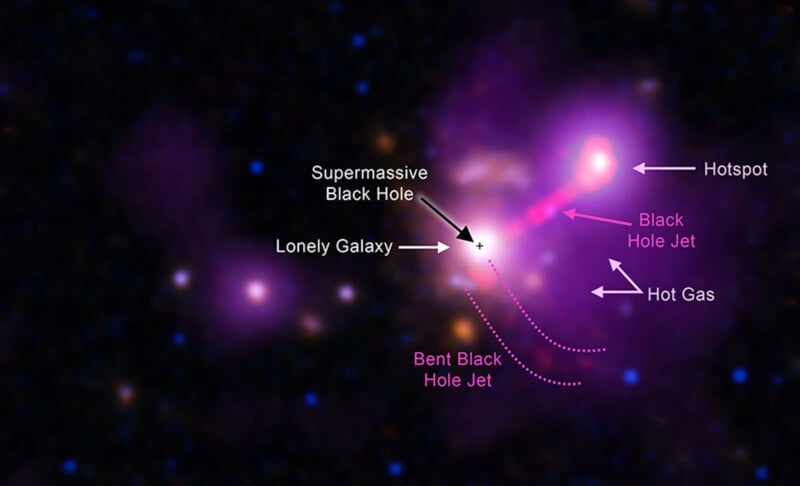
In many ways, 3C 297’s environment seems ripe for a full-blown galaxy cluster. It includes the features that astronomers would expect to accompany hundreds or thousands of galaxies. However, 3C 297 is all alone.
“It seems that we have a galaxy cluster that is missing almost all of its galaxies. We expected to see at least a dozen galaxies about the size of the Milky Way, yet we only see one,” says Valentina Missaglia of the University of Torino in Italy, the lead author on the newly published study.
A possible explanation for what happened to the “missing galaxies” is that the gravitational pull of the largest galaxy contributed to the smaller companion galaxies to “fall and be assimilated by the alpha.”
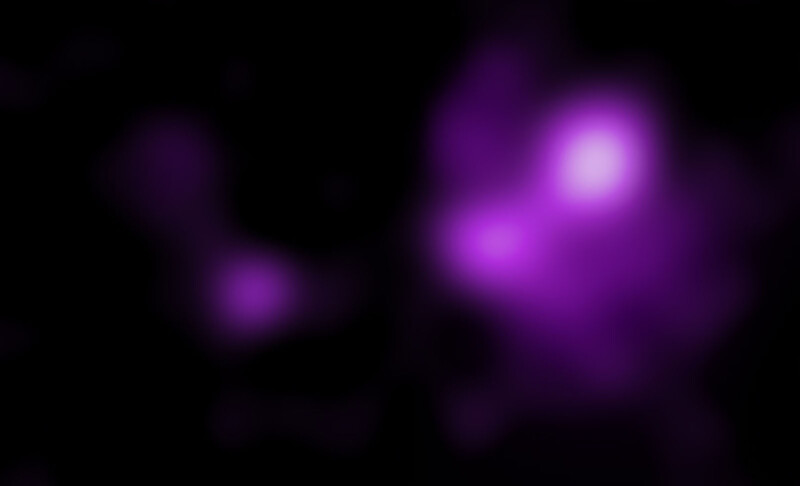
The researchers observed a pair of key traits of a galaxy cluster when investigating the Chandra X-ray data. The data reveals that 3C 297 is surrounded by large amounts of extremely hot gas and that the supermassive black hole within the area has created intense X-rays about 140,000 light-years away, suggesting that it has “plowed into gas surrounding the galaxy.”
“A third trait of galaxy clusters possessed by 3C 297, previously reported in Karl G. Jansky Very Large Array data, is that one of the radio jets is bent, showing that it has interacted with its surroundings,” writes the Chandra X-Ray Observatory team.
After investigating data collected by Missaglia’s team using the Gemini Observatory in Hawaii, the team realized that the 19 galaxies that appear close to 3C 297 in Gemini’s optical image are located at many different distances and are therefore not within the same galaxy cluster as 3C 297.
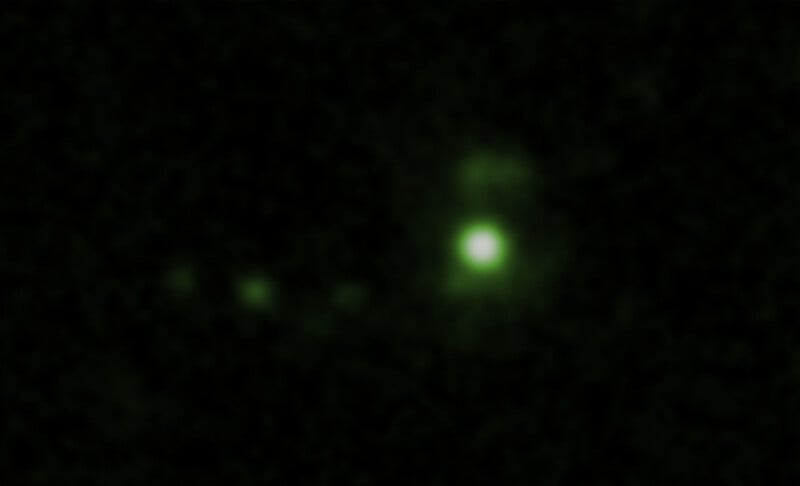
It’s common for scientists to combine data from Chandra with other observatories. Last fall, researchers combined data from Chandra with images captured by the James Webb Space Telescope to stunning effect.
The question remains: What happened to the galaxies that should be near 3C 297? The researchers believe that 3C 297 is no longer a galaxy cluster but a “fossil group.” If this classification of a fossil group proves correct, 3C 297 would be the most distant of its type ever observed.
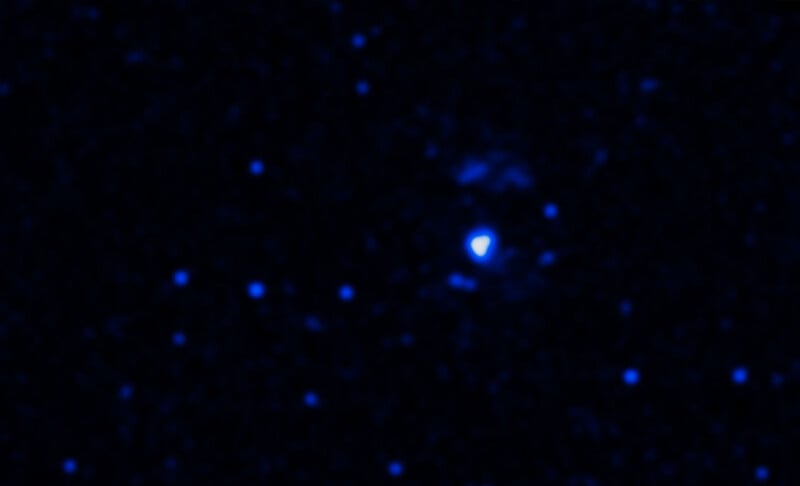
“We think the gravitational pull of the one large galaxy combined with interactions between the galaxies was too strong, and they merged with the large galaxy. For these galaxies apparently resistance was futile,” says co-author Juan Madrid of the University of Texas, Rio Grande Valley.
“It may be challenging to explain how the universe can create this system only 4.6 billion years after the Big Bang,” says co-author Mischa Schirmer of the Max Planck Institute for Astronomy. “This doesn’t break our ideas of cosmology, but it begins to push the limits on how quickly both galaxies and galaxy clusters must have formed.”
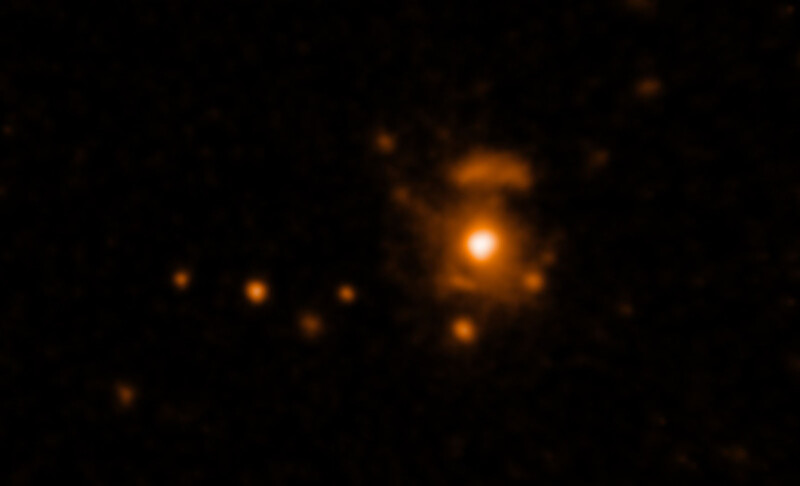
Although there isn’t evidence of dwarf galaxies near 3C 297, the researchers can’t rule it out. Even if there are undetected dwarf galaxies, they wouldn’t explain why there aren’t larger galaxies similar to the size of the Milky Way. For example, M87 in the Virgo Cluster has had large galactic neighbors for billions of years. In contrast, 3C 297 will spend billions of years all by itself.
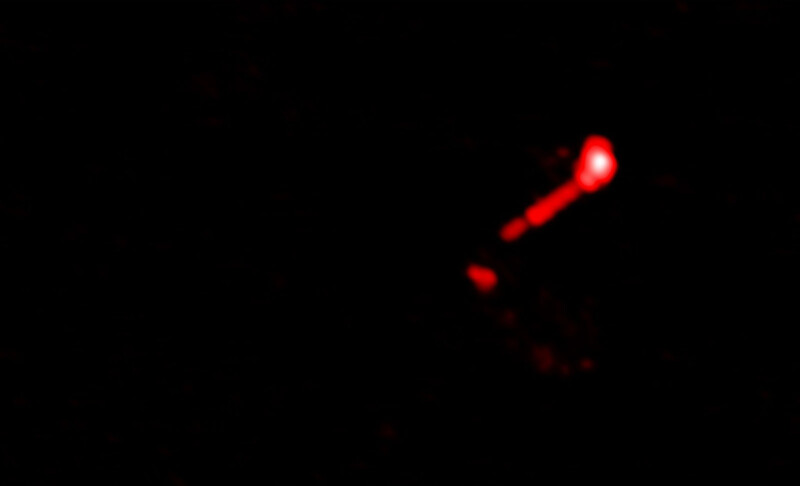
The full study, “Powerful Yet Lonely: Is 3C 297 a High-redshift Fossil Group?” is available in The Astrophysical Journal.